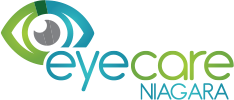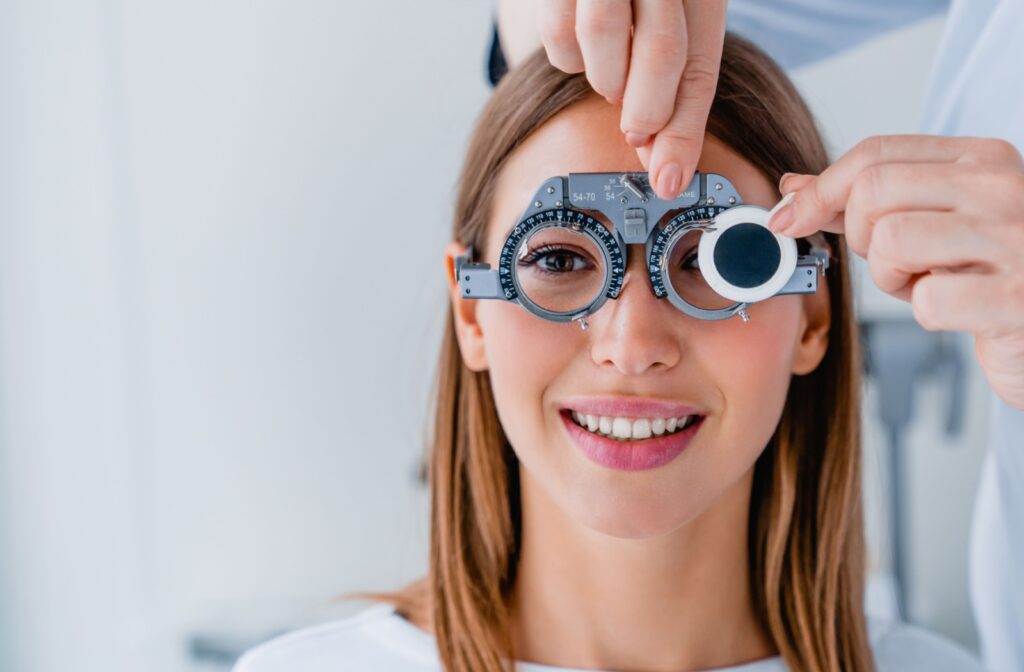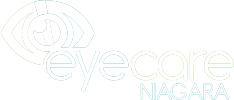Taking care of your eyes should always be a priority. Your visual system is a complex tool that allows you to see the world and move through your day. That’s why regular eye exams are so important—they give a trained eye care professional a way to monitor your vision and keep your eyes healthy. But what does it mean to have a comprehensive eye exam?
A comprehensive eye exam is an appointment with a trained optometrist. During this exam, your optometrist will issue a series of different tests performed with different machines. They’ll check your vision, your eye’s internal structures, and your overall eye health. This way, they can address any issues, give you an up-to-date prescription, and provide you with any advice to take care of your eyes going forward.
Why Are Regular Eye Exams So Important?
Human vision is incredible, allowing a person to navigate the world around them with ease. But it’s also something often taken for granted. The human eye is an extremely complex system, and just like any system, things can sometimes go wrong. Eye conditions, diseases, even minor changes in your vision—all of these can affect your ability to see. And sometimes, these conditions can develop slowly without obvious signs.
This is why regular eye exams with your optometrist are so essential. They’re about more than just updating a prescription; they’re about preserving your vision and keeping your eyes healthy.
During these exams, your optometrist can check for all kinds of eye conditions. They can keep an eye out for:
- Refractive errors or vision changes, like myopia, hyperopia, or presbyopia
- Glaucoma, the buildup of intraocular pressure that can lead to long-term vision damage
- Age-related macular degeneration, where a part of the retina degrades over time
- Cataracts, the natural clouding of the eye’s natural lens
These conditions can all develop slowly without any clear indicators and can pose a bigger threat than just minor vision changes. But they can also be difficult to self-diagnose—that’s why an optometrist is so crucial to maintaining your vision.
How Often Should You Get an Eye Exam?
So how often should you be visiting an optometrist for an eye exam? While it can vary depending on your unique situation, it’s generally recommended to visit your optometrist:
- At least once per year if you’re under the age of 18
- At least once every 2 years if you’re between the ages of 18-64
- At least once per year if you’re over the age of 65
- At least once per year if you have been diagnosed with diabetes
However, if you ever notice any abnormalities with your eyes or vision, it helps to see your optometrist more often. If you ever experience any discomfort, pain, or significant vision changes, it could be a sign that something’s wrong. Don’t wait for symptoms to get worse; instead, make your next appointment earlier than the calendar recommends.
What to Expect at an Eye Exam
When you first visit our team for a comprehensive eye exam, you may be surprised to know the process doesn’t occur entirely in the exam room. Instead, it all begins the second you walk through our door.
Preparing for the Exam
The first step to your eye exam is the preparation. Before you come in for the appointment, make sure to:
- Make a note of any changes or abnormalities you’ve recently experienced, like blurry vision, dry eyes, or headaches.
- Make a note of your family history (such as if you have family members with glaucoma or refractive errors)
- Bring along a list of any medications you may be taking.
- Bring along your most recent set of eyeglasses or contact lenses.
While this seems simple, it’s all valuable information. It lets your optometrist know about any indicators that something may be afoot, and your current prescription lets your optometrist know if there have been any changes in your vision since your last appointment.
Once you’re at our clinic, we’ll briefly discuss any recent changes in your vision, and then you’ll head to the exam room.
In the Exam Room
After the preparation phase, you’ll meet with your optometrist. They’ll ask some general questions about the information provided, like your family history and the medication you’re taking. Then, you can expect a series of tests, including:
- A visual acuity test where you’ll read from an eye chart
- A refraction test to determine your exact prescription
- Peripheral vision test to check for any blind spots
- Eye muscle movement test to ensure proper coordination between both eyes
During this exam, your optometrist may dilate your pupils. This allows more light to enter the eye and makes it easier for your optometrist to see inside the eye. They can examine the retina, the optic nerve, and more to determine the health of the inner structures of your eye.
When your pupils are dilated, you’ll likely experience some light sensitivity or blurry vision for a short time. Try to avoid driving after your exam, as it can be dangerous; it helps to have a friend or family member give you a ride.
After the Exam
Once the exam is over, your optometrist can answer any questions you may have. If you have any concerns, feel free to speak up; our team wants you to feel comfortable!
Then, you’ll receive your updated prescription. If there are any problems with your eyes, your optometrist will explain them, and give you a plan going forward.
Book Your Next Eye Exam with EyeCare Niagara
Our team at EyeCare Niagara knows how important regular eye exams are. That’s why we’re committed to treating every one of our patients with quality care. You’re in good hands the moment you walk in our door, so book an appointment with our team today!




